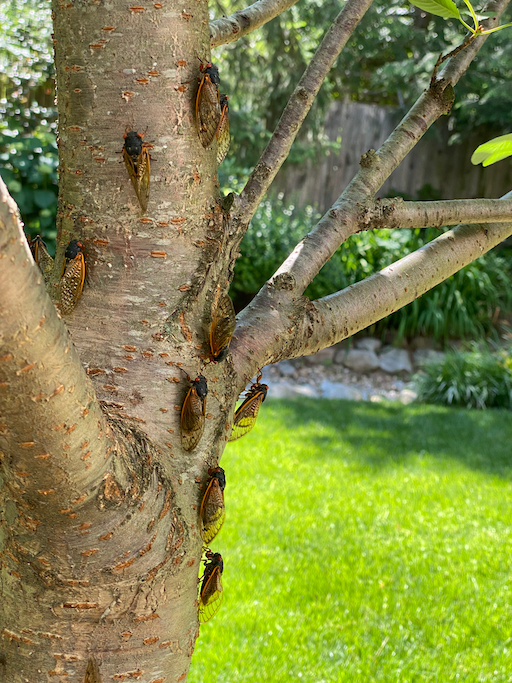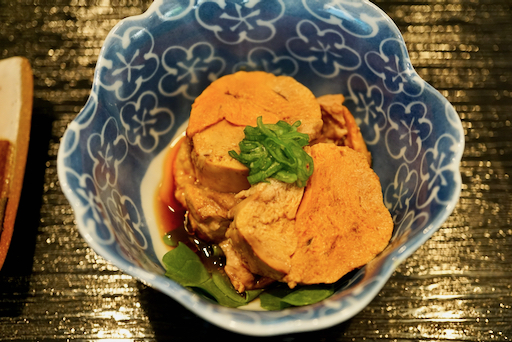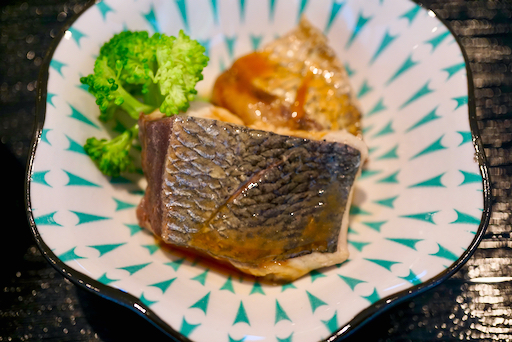Monday, June 21, 2021
Periodic cicadas Brood X 2021 17年周期の蝉
Friday, June 18, 2021
Crumpet version 2 クランペット 第二弾
The new recipe had instructions as to how to control the heat to develop multiple holes as shown in the second and third pictures. You can see that while cooking, bubbles developed and then popped creating nice holes.
300 g. (2 cups) AP flour
400 ml. (1 1/2 cups) warm water
1 tsp. Salt
1 tsp. Sugar
2 tsp. Baking powder (The recipe said baking soda doesn’t work as well)
2 tsp yeast
2 tbs. warm water
1 1/2 tsp. Salt
2 tsp. Sugar
3 tsp. Baking powder (The recipe said baking soda doesn’t work as well)
3 tsp yeast
3 tbs. warm water
600 g. (4 cups) AP flour (or 2 cups AP and 2 cups + 1/4 cup Cake flour)
800 ml. (3 cups) warm water (or buttermilk or regular milk)
2 tsp. Salt
2 tsp. Sugar
4 tsp. Baking powder (The recipe said baking soda doesn’t work as well)
4 tsp yeast
4 tbs. warm water (1/4 cup)
Directions:
Bloom the yeast in the warm water. Put the flour, water and salt in the bowl of an electric mixer and beat on speed 5 for 1 minute until smooth paste forms. Add the yeast mixture, sugar and baking powder and mix on speed 5 for another 30 seconds. Cover with cling wrap and put in a warm place for 15 to 30 minutes. The surface should get foamy but it will only increase in volume by 10 to 15 %.
These crumpets were much better than the first batch we made. They got even better after the second day. We tasted them just out of the pan and the outside was crunchy but the inside was kind of wet and doughy. We initially thought they may not have been cooked through. But by the next day the insides had firmed up and were nicely chewy. The flavor was nicely accented with the taste of browned butter. We toasted them in the toaster oven and served them with melted butter and some honey. Mighty fine!
Tuesday, June 15, 2021
Sashimi from Japanese grocery store 日本食料店からのはまち刺身
We somehow feel really good that we can get Japanese food items from our Japanese grocery store again. It made us feel like there may be light at the end of this covid tunnel. We really like to start our evening with a little bit of sashimi.
Saturday, June 12, 2021
Eggplant stir fried with sweet miso 茄子の味噌炒め
This is the eggplant dish I made with the last remaining Japanese (Asian) eggplant we recently got from Hmart (left in the first picture). I served this with bluefish simmered in miso ブルーフィッシュの味噌煮 (right).
Ingredients for the eggplant (makes about 8 of the small servings in the first picture):
1 Japanese eggplant (this was a big one about 10 inch long), stem end removed, skin peeled in strips and cut into bite sized pieces ("Ran-giri" 乱切り) then soaked in salted water to 10-15 minutes.
2 tsp neutral oil (I used light olive oil) for frying
1 tsp grated ginger root
For miso seasoning (Dissolve the below in a small bowl)
2 tbs sake
2 tsp red miso
2 tsp mirin
Directions:
Sauté the eggplant in a frying pan with the oil on medium flame until the oil is absorbed and the eggplant is soft (few minutes).
Add the ginger and then the seasoning and stir for a few minutes.
I served with white sesame seeds as garnish.
Wednesday, June 9, 2021
Bluefish "sanga" fish cake ブルーフィシュのサンガ
Blue fish meat scraped off the bone, tail and other parts, hand chopped using a heavy Chef’s knife, about 150grams (a guess)
Red miso 1 tbs
Ginger cut finely, 1 tsp plus ginger juice from grated ginger (about 1/2 tsp)
Scallion, 4 stalks, finely chopped
Potato starch (katakuri-ko) 2 tsp
Dark sesame oil 1/2 tsp
Perilla leaves (4-6 depending on the size)
Directions:
Mix all ingredients well except for the perilla leaves.
Divide the mixture into 6 equal portions.
Lightly oil hands and make the portions into flat discs and place the perilla leaves on one side (#1) in the third picture).
On a medium low flame with a small amount of neutral oil, first cook the side without perilla leaves until nicely browned (#2).
Flip it over and cook the other side for another 1 minute or so or until done (#3 and #4).
This is a good way to use scrap fish meat from the bluefish. The double doses of ginger juice and finely chopped ginger add ginger flavor but not overwhelmingly so. The miso flavor and sesame oil are a good combination. I am not sure if I can taste the perilla leaves. It warmed up nicely by microwaving.
Sunday, June 6, 2021
Raised Buckwheat Blini cooked in a “platar”
Ingredients:
For Blini (makes about 21 blini)
1 1/2 cup milk
4 Tbs. (1/2 stick) butter
2 tsp. yeast
2/3 cup AP flour
2/3 cup buckwheat flour
2 Tbs. sugar
1 tsp. salt
3 large eggs, lightly beaten
For Blini (recipe X2) (mix in the 6 cup pyrex mixing cup so the batter can be poured rather than scooped into the cooking cups.)
3 cup milk
4 tsp. yeast
1 1/3 cup AP flour
1 1/3 cup buckwheat flour
4 Tbs. sugar
2 tsp. salt
6 large eggs, lightly beaten
For topping (everything is to taste and depends on the number of pancakes being served. Also anything can be used. This is just what we came up with.)
sour cream (to taste)
2 eggs, scrambled
1 Tbs. Ikura (salmon eggs) or caviar
Chives finely chopped
Directions:
For the Blini: Melt the butter in the milk. Let it cool to about 105 to 115 degrees. Mix the dry ingredients (yeast through salt) in another bowl. Pour the cooled milk mixture over the dry ingredients mixing until just combined. Cover the bowl with plastic wrap and let it rise in a warm place until doubled in volume (about 1 hour) (#1 in the 3rd group of pictures). Once it has risen either make the pancakes immediately or refridgerate covered for up to 24 hours. (We made the batter after dinner and refridgerated it over night). If refridgerated let it stand at room temperature for 20 minutes (#2). Then deflate the batter and whisk in the eggs lightly beaten.
Now, I am providing the details of how I cooked blini in the platar. This is for our future reference because this requires some finesse. First, I took out the planar and washed it with hot water (no soap), dried it by heating it on the stove and coated each of the 7 wells with olive oil using a paper towel (#3). I preheated the pan on low flame for 5 minutes then used a small ladle (second smallest ice cream scoop) add the batter, half filling the wells (#4). I continued to cook until the surface of the pancake showed bubbles and looked dry (5-7 minutes). Then came the challenge of flipping them. According to my wife, the directions in the JOC said flip the pancakes over using a skewer. But that proved entirely too simplistic. After some experimentation I came up with a method of loosening the blini by running the tip of a dinner knife around the perimeter of the well, then inserting the knife tip under the bottom of the blini to pry it loose. Then with the knife under the blini and a bamboo skewer inserted into the top I flipped it (#5). As I repeated the process I got better and could flip the pancake without damaging the side. But I noticed that the 6 wells surrounding the center well had uneven heat and only the outer half got browned (#5). So with the next batch, I released the blini before they were ready to flip and turned them180 degrees in the well then cooked them for a few more minutes before flipping them over. In the next batch, the first side was more evenly browned (#6). In any case, when all was said and done, we had at least a few perfect blinis (#7= top and #8=bottom).
This is the height of decadence. The blini had a soft thick texture and a very pleasing robust rustic flavor from the combination of buckwheat flour and yeast. The sour cream, eggs and salmon caviar were an excellent combination with complementary creamy texture. The burst of saltiness from the ikura at the end of the bite was a perfect finale. This is how we will be making blini in the future. Next stop crumpets in the platar.
Thursday, June 3, 2021
Mint and pea kakiage ミントと豌豆のかき揚げ
Sometime ago, I saw this recipe in the web version of a Japanese newspaper. I thought mint and pea kakiage (a type of tempura made with several small food items) かき揚げ was very interesting and unique but was dragging my feet in actually making it. The mint crop is flourishing in our herb garden and my wife harvested some to make mint tea recently. She reserved some mint leaves for me to use for this kakiage (so I found myself fresh out of any excuses for not making it.) Finally, I made this dish one weekend evening. I served it with wedges of lemon and green tea salt.
Ingredients (I did not precisely measure anything but it made four kaiage tempura).
About 1 cup of fresh mint leaves, washed and dried.
About 1/2 cup of peas (I used frozen petit peas, thawed).
Cake flour for dusting.
Peanut oil for frying.
For Tempura batter
About 1/2 cup cake flour
Cold carbonated water.
Directions:
Lightly dust the mint leaves and peas with the cake flour (#1 in the third picture)
Mix the cake flour and the carbonated water to make thin tempura batter and add the peas and mint leaves (#2)
Using a slotted spoon, I scooped up the mint and peas and slid the clump into the hot oil (350F) (#3)
Turning once, I fried them until crispy and slightly golden then drained them (#4)
We couldn’t taste much of the peas but this was very light, airy and crunchy with refreshing mint flavor. Perilla leaves, which are a bit similar to mint leaves, are a standard tempura item which I have used in several variations but mint leaves are certainly unique. Since we have a good supply of fresh mint leaves during the summer, we might try this in different combination...asparagus and mint immediately comes to mind.
Addendum
I made this dish again a few days later. I also found the original recipe and only thing I missed was adding potato starch (should equal 1/2 the amount of cake flour used). I also added fresh corn. I lowered the hot oil temperature to avoid browning. All worked better.




























